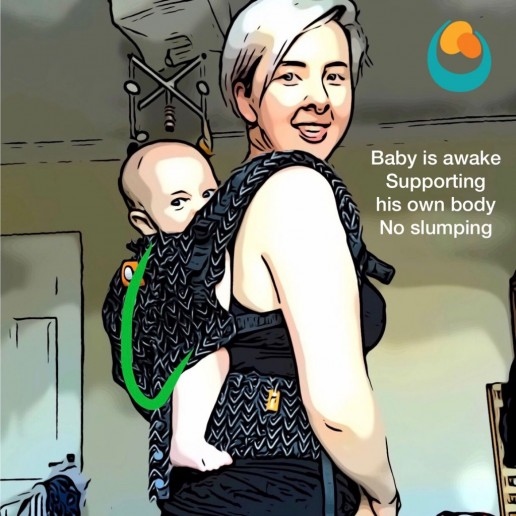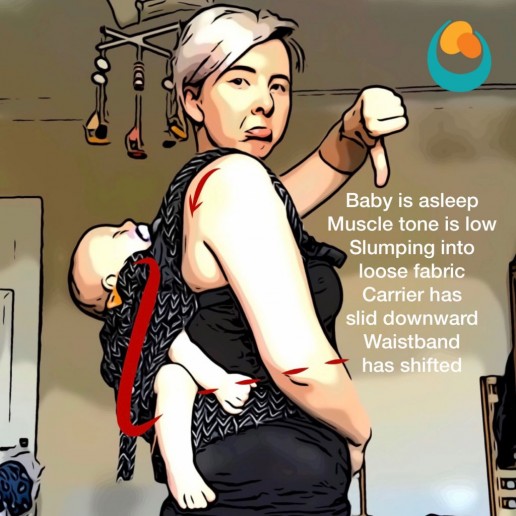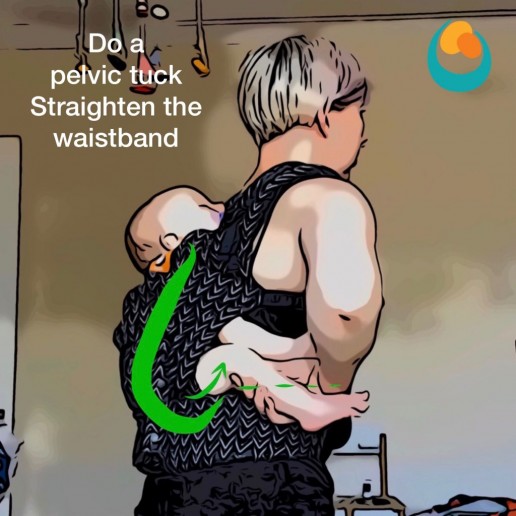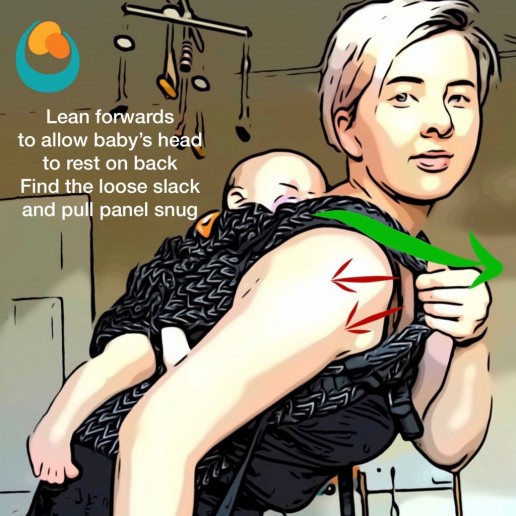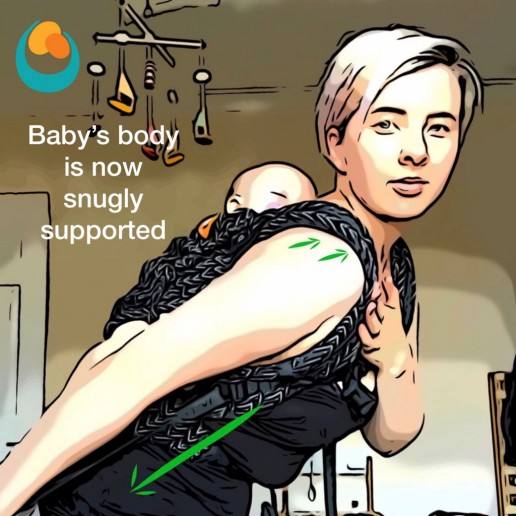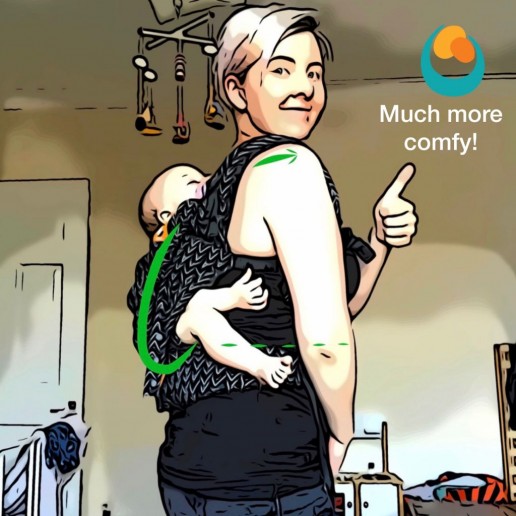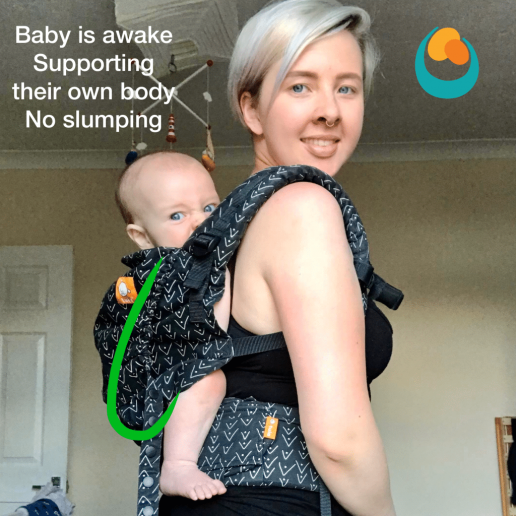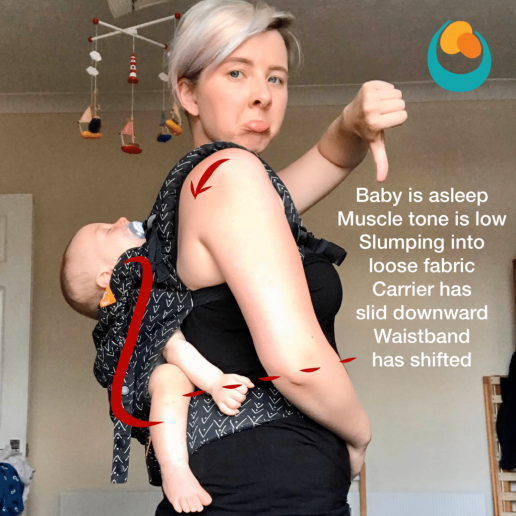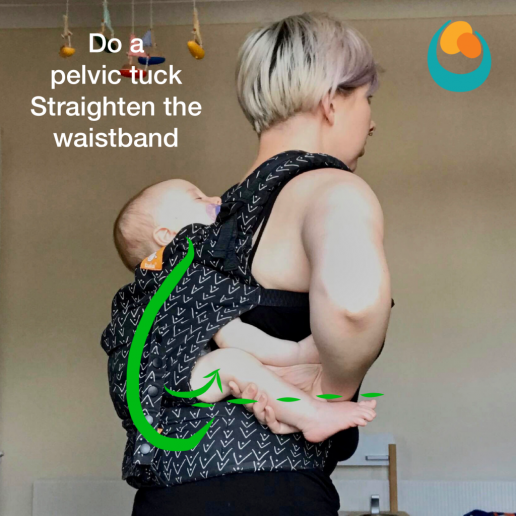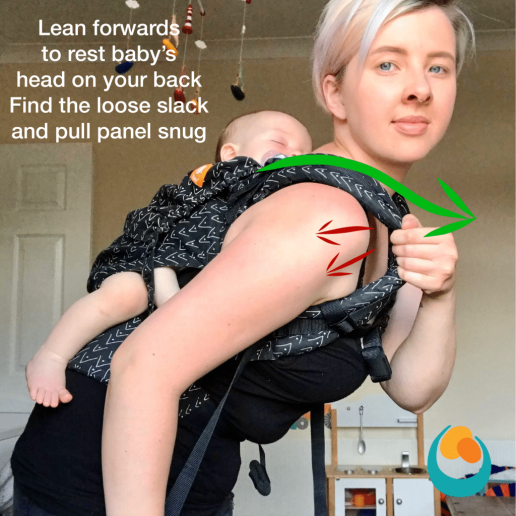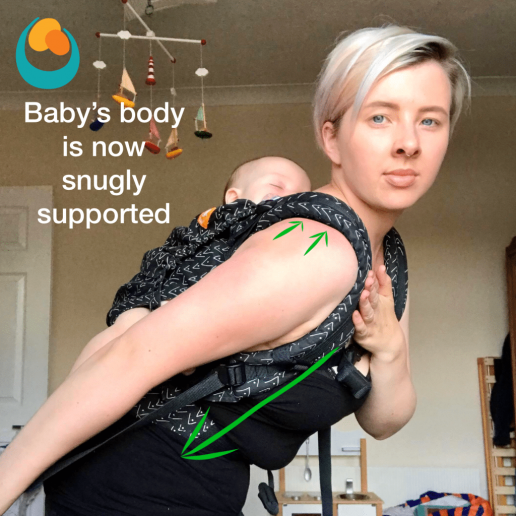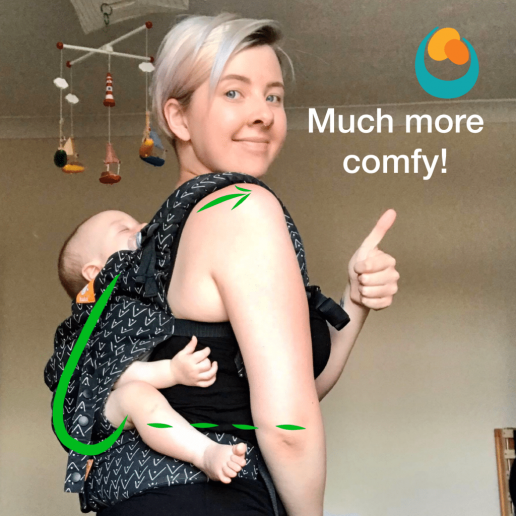Babies (and older children) often seem to relax sideways and their heads can loll back when they fall asleep. This sleepy sling position can be worrying for parents, however, a backward head loll does not obscure the airway in the same way that can happen with a forward slump with the child’s chin touching their chest.
This happens because muscles relax in sleep and their tone reduces. An awake child has actively engaged muscles helping to maintain position and posture. Some slight looseness in the carrier fabric isn’t noticeable due to this. When sleep arrives, children relax and slump downwards, moving into the space created by any loose fabric. They feel heavier, and the carrier often slides downwards, shifting waistband position and reducing the effect of the pelvic tuck, which up till now has helped to support their upper body and neck.
Here are some ways to improve the position of a sleeping child; done here with a back carry and a buckle carrier. The pelvic tuck is reinforced, the waistband adjusted, and the loose slack removed to support upper back and neck better. (Note that very young babies have heavier heads and shorter necks than their older counterparts, and less muscle bulk, so the pelvic tuck is less effective when they are asleep.)
Please see our pelvic tuck resources for how to do this simple yet effective technique.


